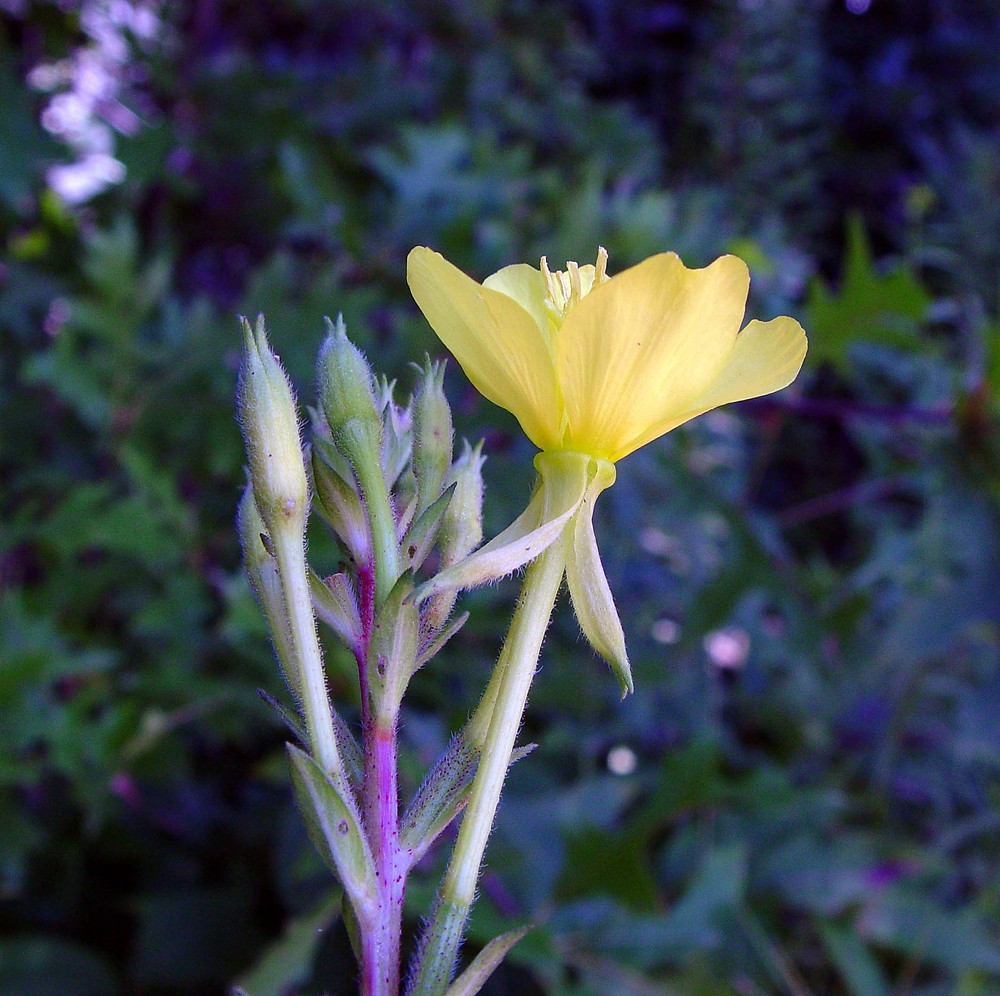Nodding evening primrose
(Oenothera nutans)

Description
Oenothera nutans, commonly known as the nodding evening primrose, is a species of herbaceous perennial plant that belongs to the Onagraceae family. It is native to North America and is commonly found in the central and eastern regions of the United States, from Texas to Maine. In this article, we will explore the different aspects of this fascinating plant, including its physical features, habitat, uses, and cultivation. Physical Features Oenothera nutans is a relatively small plant that grows up to a height of 1 to 2 feet. Its stem is slender, branching, and often reddish in color. The leaves of the plant are alternate, lanceolate, and slightly toothed. They are light green in color and can be up to 4 inches long. The flowers of Oenothera nutans are what make this plant so striking. They are typically pale yellow in color, although some varieties may have a more intense shade of yellow. The flowers are cup-shaped and have four petals that are 1 to 1.5 inches in length. The petals open at night and nod downward, giving the plant its common name. Habitat Nodding evening primrose is native to North America and is commonly found in the central and eastern regions of the United States, from Texas to Maine. It can also be found in some parts of Canada. The plant prefers well-drained soils and can tolerate a range of soil types, including clay and sand. It also prefers full sun to partial shade and can tolerate drought conditions. Oenothera nutans is a hardy plant that thrives in a variety of habitats. It can be found growing in meadows, prairies, along roadsides, and in disturbed areas. Uses Oenothera nutans, commonly known as the nodding evening primrose, has a variety of uses, both medicinal and ornamental. In traditional medicine, Oenothera nutans has been used to treat a range of ailments, including headaches, stomach problems, and menstrual cramps. The leaves and roots of the plant are also used in poultices to treat skin conditions such as wounds and rashes. In addition to its medicinal uses, Oenothera nutans is a popular ornamental plant. Its striking flowers and hardy nature make it a favorite among gardeners. The plant is often used in borders, rock gardens, and as a ground cover. It is also attractive to butterflies and other pollinators, making it a great choice for wildlife gardens. Cultivation Nodding evening primrose is relatively easy to grow and requires little maintenance. The plant prefers full sun to partial shade and well-drained soil. It can be propagated through seed or by dividing established plants. When growing from seed, it is best to sow the seeds in the fall or early spring. The seeds should be sown directly into the ground and covered lightly with soil. The plant will typically germinate in 1 to 2 weeks. If propagating by division, it is best to do so in the spring or fall. The plant can be divided into smaller clumps and replanted in a new location. When caring for Oenothera nutans, it is important to water the plant regularly, especially during periods of drought. Fertilizer is not necessary, but a light application of compost or a balanced fertilizer can help promote healthy growth. Conservation Status The conservation status of Oenothera nutans, commonly known as the nodding evening primrose, is not of concern. This plant species has a wide distribution range and is considered common and abundant in its native habitats. It is not listed as a threatened or endangered species by any conservation organizations or government agencies. However, it is important to note that habitat destruction and other environmental threats could potentially impact the populations of Oenothera nutans in the future, and it is important to monitor its status and ensure its conservation for future generations. Conclusion Oenothera nutans is a hardy and attractive plant that has a range of uses, from traditional medicine to ornamental gardening. With its striking flowers and easy cultivation, it is a great choice for novice and experienced gardeners alike.
Taxonomic tree:







